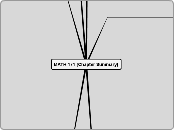MAT.116
5.2
Systems of Linear Equations: Unique Solutions
Unit Column
A column in a coefficient matrix is called a unit column if one of the entries in the column is a 1 and the other entries are zero.
Pivoting
Make all other entries in the same column zero by replacing each nonpivot row with the sum of that row and a constant multiple of the pivot row (the constant multiple should be the opposite of the entry that is being changed to a zero)
Make the pivot element 1 by swapping the row with a row below it, or by multiplying the row by the reciprocal of the pivot element
Transform a column into a unit column
Gauss-Jordan Elimination
Continue until the final matrix is in row-reduced form.
Interchange the second row with any row below it, if necessary, to obtain an augmented matrix in which the second entry in the second row is nonzero. Pivot the matrix about this entry.
Interchange rows, if necessary, to obtain an augmented matrix in which the first entry in the first row is nonzero. Then pivot the matrix about this entry.
Write the augmented matrix corresponding to the linear system
Row-Reduced Form
If a column in the coefficient matrix contains a leading 1, then the other entries in that column are zeros.
In any two successive (nonzero) rows, the leading 1 in the lower row lies to the right of the leading 1 in the upper row.
The first nonzero entry in each (nonzero) row is 1 (called a leading 1).
Each row consisting entirely of zeros lies below all rows having nonzero entries.
Augmented Matrix
A matrix formed from a system of linear equation where the equations are written in standard form with the variable terms written in the same order for each equation.
The matrix has a vertical line separating the coefficients from the left sides of the equations from the constants on the right sides of the equations.
The matrix of coefficients on the left side of the vertical line is called the coefficient matrix.
Row Operations
Replace any row (equation) by the sum of that row (equation) and a constant multiple of any other row (equation)
R_i + aR_j --> R_i
Replace an row (equation) by a nonzero constant multiple of itself
cR_i --> R_i
Interchange any two rows (equations)
R_i <--> R_j









